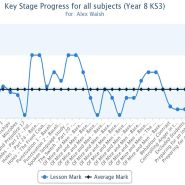Evaluating the Pupil Premium isn’t easy – it’s official. The Department for Education’s (DfE) recent independent evaluation of the Premium (‘Evaluation of Pupil Premium: Research Report.’ July 2013) includes an admission that even it can’t yet tell what the impact of the Premium will be, and that it’s ‘too early’ to tell which spending strategies are likely to make the most difference to attainment.
Premium spending report
The evaluation noted that some schools have already implemented sophisticated monitoring systems to track both individual pupils and groups of pupils, a finding echoed in Ofsted’s latest report into how schools are spending the Premium. (‘The Pupil Premium: how schools are spending the funding successfully to maximise achievement.’ February 2013.)
However, Chief Inspector of Schools, Sir Michael Wilshaw, noted that, “…some schools still lack good enough systems for tracking the spending of the additional funding or for evaluating the effectiveness of measures they have put in place in terms of improving outcomes.”
Ofsted concluded that effective monitoring of Premium spending necessitates a broad range of data being looked at holistically, including: pupils’ work, attendance, achievement data, case studies, observations, and the views of both pupils and staff.
Effective monitoring allows for approaches that can be adapted or altered rapidly if they’re not working. Data must be used intuitively at regular intervals to identify, (a) the problems that are affecting pupils, and (b) what’s working within a school.
Ofsted’s new focus
Time is of the essence. In September, Ofsted introduced a stronger focus on the performance and progress of Premium pupils within their inspections. It’s unlikely that a school will be judged ‘outstanding’ if its disadvantaged pupils aren’t making clear progress. Schools judged as ‘requiring improvement’ (i.e. not using their Premium effectively) will have a ‘Pupil Premium Review’ supported by another Head teacher, in order to improve provision for their disadvantaged pupils.
Monitoring and evaluation
Studying maths Clearly, schools need to be able to see if any change in practice is actually working, especially since Ofsted expects to see evidence of the impact of Premium-funded initiatives on attainment. Teacher assessment is one way of gathering data; another is standardised tests, which can give schools the data they need to determine which policies, practices and interventions are effective in their setting.
The Educational Endowment Foundation (EEF) offers useful guidance in its published criteria (see below) used to determine the suitability of standardised tests. The National Foundation for Educational Research (NFER), Ofsted, and the Association of School and College Leaders (ASCL) have also produced resources to help schools monitor and evaluate the efficacy of the Premium:
- EEF/Sutton Trust: Teaching and Learning Toolkit. Compiled by Durham University, this toolkit highlights the most effective strategies for using the Pupil Premium.
- SecEd/ASCL: Demonstrating Pupil Premium impact. Includes a case study of best practice for evaluating the Premium.
- Ofsted: The Pupil Premium: Analysis and challenge tools for schools. Tools to help identify gaps in achievement between pupils who are/aren’t eligible for the Premium and to formulate action plans.
- SecEd: Guide to: Ofsted and the Pupil Premium. Contains advice on effective Premium strategies, and a case study.
The experts’ view
Finally, what do the experts regard as the key to successful monitoring and evaluation? EDLounge picked the brains of the social policy gurus at the Joseph Rowntree Foundation (JRF), and their education counterparts at the ASCL. Here’s what they had to say:
JRF:
Helen Barnard, Programme Manager, (Poverty Team) stressed the need for “reflective use of external evidence alongside internal school data and experience in order to maximise the impact of the Premium.”
“Most schools are making some use of academic research and just over one-third use the Education Endowment Foundation’s toolkit. However, it is not clear how far they are using this evidence in a way that informs practice, rather than to check for what they think Ofsted may be looking for!”
ASCL:
Malcolm Trobe, Deputy General Secretary, said: “To effectively evaluate the Pupil Premium, schools need accurate, detailed data – but it’s not just about the data, it’s what they do with it. There will be schools that have very good tracking mechanisms to follow every single subject in order to identify quickly where pupils are not making adequate progress so that they can take quick action to improve the situation for each youngster. Schools need to make sure that they have effective pupil tracking systems that allow them to do this.”
Your views
Do you agree? Tell us your views on monitoring and evaluating the impact of the Pupil Premium. Which approach do you think works best?









